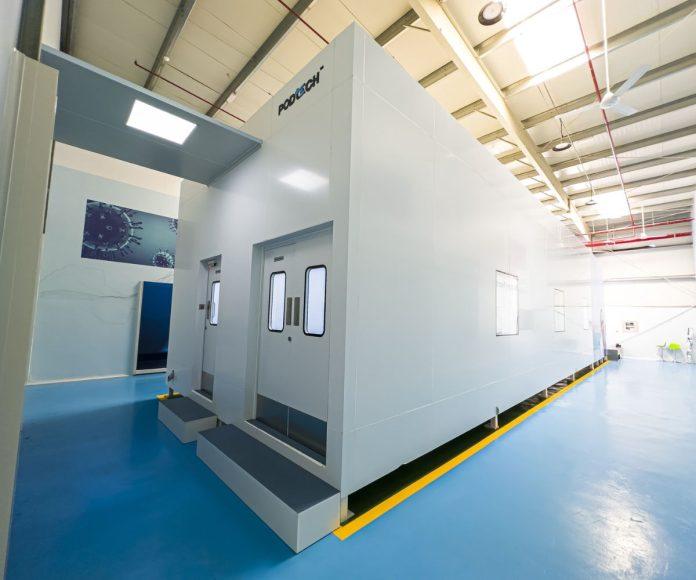Cleanroom technology is a critical component in various sectors including healthcare, pharmaceuticals, electronics, and biotechnology. These controlled environments ensure minimal levels of pollutants such as dust, airborne microbes, aerosol particles, and chemical vapours. In South Africa, the development and implementation of cleanroom in south africa technology are playing a significant role in advancing the country’s healthcare and manufacturing capabilities, supporting its economic growth and improving public health outcomes.
The Significance of Cleanrooms
Cleanrooms are specially designed, controlled environments used primarily in industries where small particles can adversely affect the manufacturing process. They are essential in sectors requiring stringent hygiene and contamination control standards. The classification of cleanrooms is based on the number and size of particles per cubic meter, with classes ranging from ISO 1 (the cleanest) to ISO 9.
The Role of Cleanrooms in Healthcare
In South Africa, the healthcare sector is one of the primary beneficiaries of cleanroom technology. The country faces numerous healthcare challenges, including infectious diseases and the need for advanced medical treatments. Cleanrooms are integral to the production of sterile pharmaceuticals, ensuring that medications are free from contaminants and safe for patient use.
The production of vaccines and biologics, which are crucial for combating diseases such as tuberculosis and HIV/AIDS, relies heavily on cleanroom environments. These facilities maintain strict environmental controls to prevent contamination, ensuring that the products meet rigorous safety and efficacy standards. The presence of cleanrooms in pharmaceutical manufacturing facilities in South Africa has thus been instrumental in supporting public health initiatives and improving patient outcomes.
Advancements in Biotechnology and Research
Cleanrooms are also pivotal in biotechnology research and development. South African research institutions and universities are increasingly investing in cleanroom facilities to advance their capabilities in genetic research, diagnostics, and the development of new treatments. These controlled environments are essential for conducting experiments that require high levels of sterility and precision.
For instance, in the field of regenerative medicine, cleanrooms enable the cultivation of tissues and cells that can be used for therapeutic purposes. The precision and control provided by cleanrooms ensure that these biological products are free from contamination, thus enhancing the reliability and success of experimental treatments.
Supporting the Electronics and Semiconductor Industry
Beyond healthcare and biotechnology, cleanrooms are vital to the electronics and semiconductor industries. South Africa’s burgeoning electronics sector relies on cleanrooms to manufacture components such as microchips and circuit boards. The production of these components requires environments with extremely low levels of particulate matter to prevent defects and ensure high-quality outputs.
The growth of the electronics industry in South Africa has been bolster by investments in cleanroom technology. Companies can produce high-precision components that meet international standards, thereby enhancing their competitiveness in the global market. This has significant economic implications, as the electronics sector is a major contributor to the country’s GDP and employment.
Challenges and Opportunities
While the benefits of cleanroom technology are clear, there are also challenges associated with its implementation in South Africa. The high cost of establishing and maintaining cleanroom facilities can be a barrier, particularly for smaller companies and research institutions. Additionally, there is a need for specialized training and expertise to operate and manage these environments effectively.
To address these challenges, there are opportunities for public-private partnerships and government support to foster the development of cleanroom technology. Investments in training programs and the establishment of shared cleanroom facilities can help mitigate costs and provide access to advanced technology for a wider range of users. Moreover, fostering collaboration between industry and academia can drive innovation and improve the country’s overall technological capabilities.
Environmental Considerations
Sustainability is an important consideration in the operation of cleanrooms. These facilities consume significant amounts of energy to maintain the stringent environmental controls required for their operation. In South Africa, where energy resources can be strained, it is crucial to implement energy-efficient practices and technologies in cleanroom operations.
The adoption of green building standards and the use of renewable energy sources can help reduce the environmental footprint of cleanrooms. Innovations such as energy-efficient HVAC systems, advanced filtration technologies, and the use of recyclable materials in construction are all contributing to more sustainable cleanroom operations.
Conclusion
Cleanroom technology is a cornerstone of South Africa’s advancements in healthcare, biotechnology, and manufacturing. These controlled environments are essential for ensuring the production of high-quality pharmaceuticals, advancing medical research, and supporting the growth of the electronics industry. Despite the challenges of cost and expertise, the benefits of cleanroom technology in improving public health outcomes and driving economic growth are substantial.
By fostering collaborations, investing in training, and adopting sustainable practices, South Africa can continue to leverage cleanroom technology to enhance its global competitiveness and improve the quality of life for its citizens. The future of cleanroom technology in South Africa holds promise, with the potential to drive significant advancements across various high-tech industries and contribute to the nation’s development goals.


